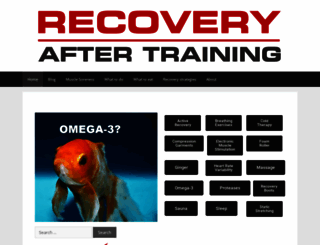How to get rid of muscle pain/soreness after a workout training session
Page Load Speed
2.5 sec in total
First Response
388 ms
Resources Loaded
2 sec
Page Rendered
96 ms

About Website
Click here to check amazing Recoveryafter Training content. Otherwise, check out these important facts you probably never knew about recoveryaftertraining.net
Wonder why you feel muscle pain, soreness, stiffness and tired 3 days after a workout? Learn here why your muscle feels that way and how to recover faster!
Visit recoveryaftertraining.netKey Findings
We analyzed Recoveryaftertraining.net page load time and found that the first response time was 388 ms and then it took 2.1 sec to load all DOM resources and completely render a web page. This is quite a good result, as only 40% of websites can load faster.